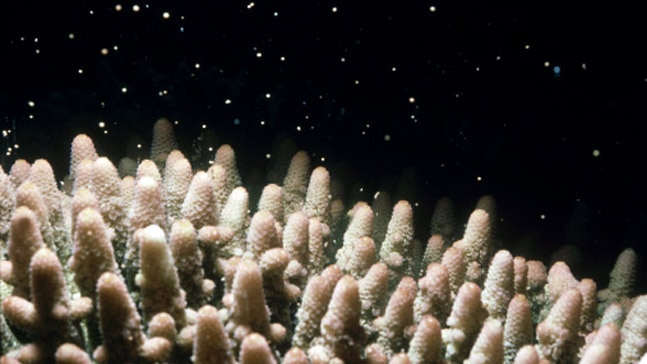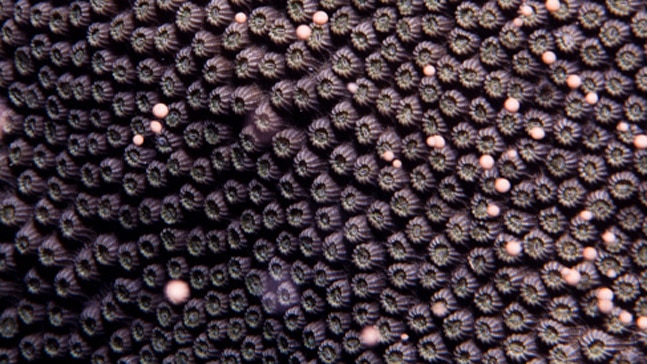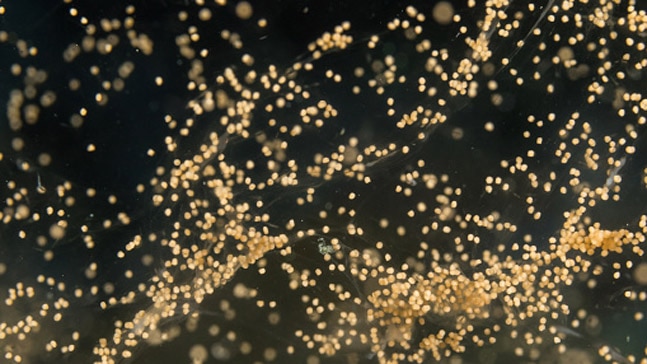Great Barrier Reef corals have sprung back to life and the photos are simply stunning

The Great Barrier Reef corals are undergoing a regeneration process, and the world is in awe.
The Great Barrier Reef synced to give birth to its next generation in its annual coral spawn.
And this was special.
This colorful delight was special because the last few years have not really been kind to the corals. High sea temperatures and rising pollution had endangered corals, and numerous coral bleaching episodes in the past had caused a serious issue for the environment. The UN had classified these reefs as "critical'' just a few days back as it recognized the degrading health of corals.

That is why it is gratifying to see nature recover its ecological functions after a recovery phase of more than 18 months.
So what does it feel like?

Photo: Getty Images
Underwater, you will see some tiny tiny little, colorful balls floating up from the corals. There are beautiful coral colonies laden with parcels of sperm and egg and slowly over the course of the night, they erupt. Out come more colorful balls that float in the sea and they continue to rise up as you spend uncountable moments watching them rise.

Coral spawning is genetic gold for #Reef resilience! The transfer of their resilient genes to the next generation of corals will be pivotal for the long-term health of the #GreatBarrierReef. Share your coral spawning sightings: https://t.co/stpeKc8H31 pic.twitter.com/fK2dggPeE7
— Great Barrier Reef Marine Park Authority (@gbrmarinepark) November 21, 2021
WHAT IS CORAL SPAWNING?

Photo: Getty Images
Though corals may resemble colorful plants growing from roots on the sea floor, it is actually an animal. They are colonial organisms that live and grow while being connected to each other. Corals are the rainforests of the seas, and support a quarter of all fish in the sea by providing essential elements like algae and habitat.
Coral reefs have a big regenerative event each year, which is synchronised to give them baby corals. It’s a process where millions of animals reproduce at the same time.

Coral Spawning lasts for two-three nights and happens once a year. Corals generally grow by asexual reproduction for most of their life, meaning, they split in two, then they grow and split in four. And so on. But Spawning helps them create genetic variations which is essential for long term sustainance.
A few nights after the full moon, when the water temperature has increased enough to stimulate maturing of the egg and sperm bundles, sperms and eggs are released in bundles into water.

Each bundle must find another bundle from the same species for fertilisation. A mass spawning spree in a very short time ensures a high likelihood of finding and fertilising a matching bundle.
Fertilised eggs develop into coral larvae (colorful balls) and on maturing, they settle on the sea bed and repopulate. Not all pink balls survive. Some are eaten by fish and plankton while some are washed out to the sea.

This happens across the entire 2,600 km Great Barrier Reef, and that is why it’s called a self-sustainable ecosystem. Coral reefs are present all across the world but none have the magnitude and complexity as the Great Barrier Reef.
This is what it looks like:
This is what it looks like when #coral spawns in the #GreatBarrierReef. It's #beautiful!?? pic.twitter.com/6VUaO9xbvf
— Auron (@auron83591234) November 25, 2021
Isn't it a wonder? The way the animal kingdom works?

